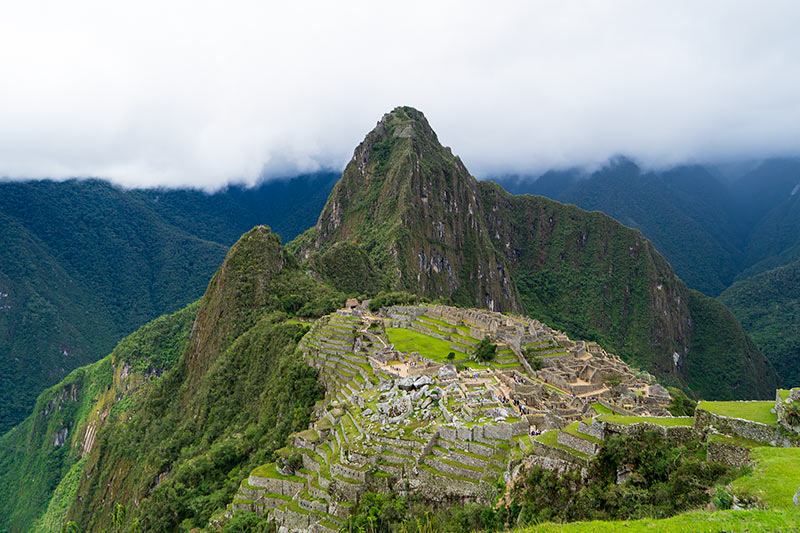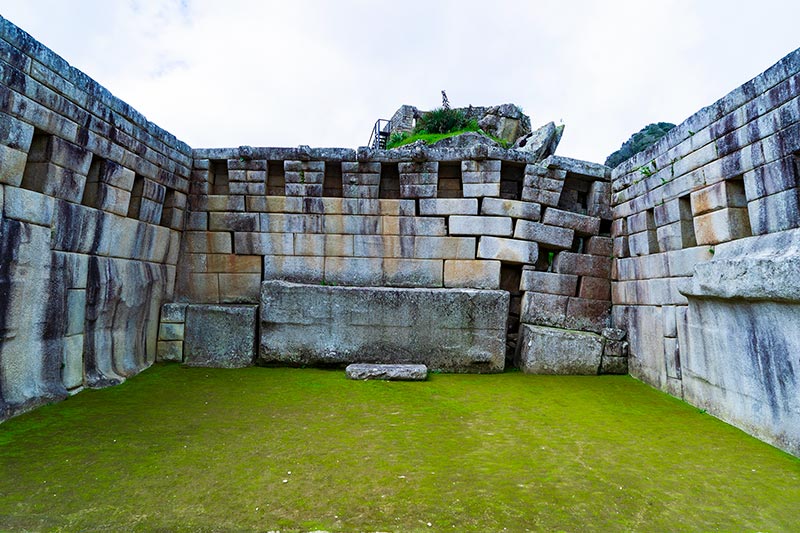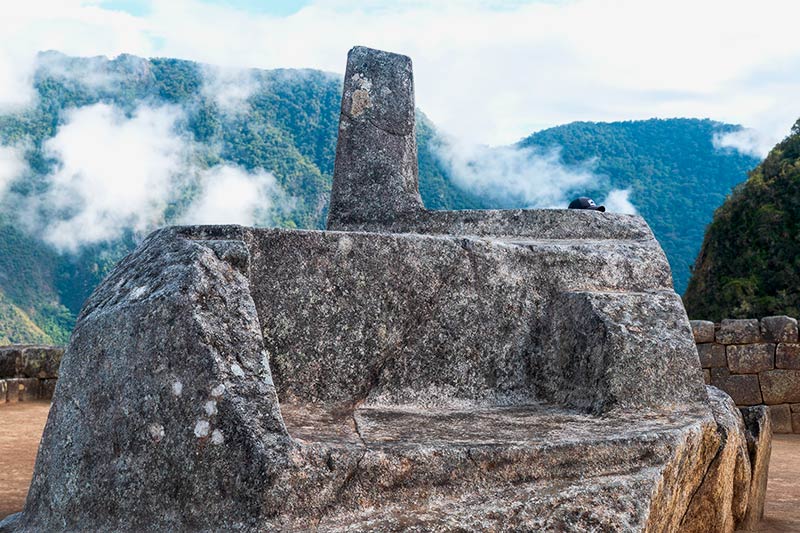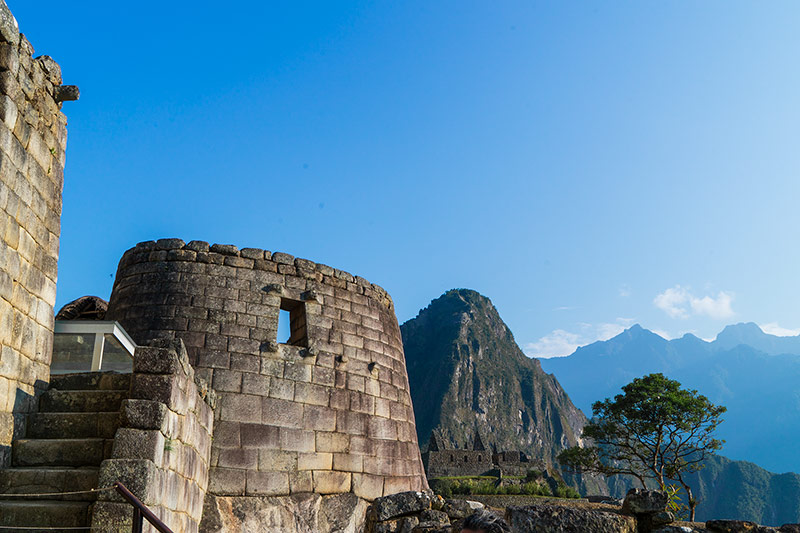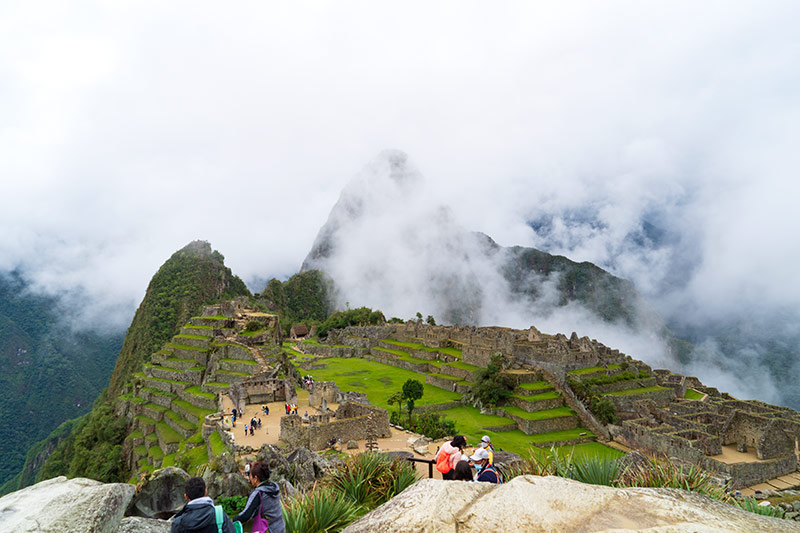What was the function of Machu Picchu?
There are many speculations and theories about the construction and function of Machu Picchu. But most scholars agree that it was a sacred place, where its inhabitants worshipped the four elements, and other entities, animals, and stars, which they also considered gods, especially the Sun. However, many of the details of its construction are still mysteries, which attract not only scholars but visitors from all over the world.
- Sacred place and refuge of the Inca Pachacutec
- Place of climate study
- Source of exotic products
- Astronomical observatory
- Main urban center
- The house of the virgins of the sun
- Agricultural center
- Fortress in the jungle region
The abandonment of Machu Picchu
To this day, the real reason why the Incas abandoned Machu Picchu is still unknown; as we already know, the Spaniards never found it. It is possible that the civil war waged between the brothers Huascar and Atahualpa, ended up reducing the food supply to the city. Another theory is that the city was affected by an epidemic that killed a large part of the population, forcing the rest to retreat to other cities. It is not known exactly why they abandoned Machu Picchu, what we do know is that Machu Picchu was abandoned before the Spaniards could reach it, which kept it practically intact and forgotten for more than 400 years until Hiram Bingham rediscovered it in 1911.
Sacred place and refuge of the Inca Pachacutec
- It is known that Machu Picchu was a sacred place where the Incas worshipped their gods such as the sun, the moon, the mountains, and the earth. However, that would not have been the only use they gave it.
- It is known that it was also used as a kind of retreat for the Inca Pachacutec and his family who checked their domain on the eastern side of the empire at least once a year.
- A city that due to its location had an ideal climate to cultivate an enormous variety of plants; among which would be found the coca leaf, traded with the tribes of the Amazon jungle.
- But religion was the main use not only in Machu Picchu but in various citadels throughout the empire. Thus, in Machu Picchu, the Incas built important stone constructions dedicated to the worship of their gods. Highlights include the Temple of the Sun, the Main Temple, the Intihuatana, the Temple of the 3 Windows, the Sacred Rock, the Temple of the Condor, and more.
Place of climate study
- The entire territory of Machu Picchu is flooded with rivers, rock formations (boulders), springs, and mountains, which were sacred to the Incas.
- In this place, the priests, besides worshipping the Inti (sun god), observed its position concerning the four cardinal points, being able to determine the climatic seasons of the territory.
- Presumably, this observation must have had a great influence in deciding the location of the city, as well as the location of each of the buildings present in this Inca city.
- Understanding the culture and religion of this civilization will help you to better understand most of the mysteries of this amazing and mystical stone city.
Source of exotic products
- The proximity to the jungle makes it possess amazing ecosystems, which serve as habitat for countless species of animals and plants.
- The jungle was the main source of rare items, which were highly valued in Inca symbology, such as colorful feathers, butterflies, birds, exotic fruits and vegetables, as well as coca leaves and other healing and hallucinogenic plants.
- Most of which entered through here, towards the opposite side of the empire; to be used in religious ceremonies and to be distributed to the other territories (theirs) of the empire.
Astronomical observatory
- Machu Picchu is also known as the city among the clouds; located between the Andes mountain range and the Amazon jungle, it provides an unrestricted view of most of the astronomical events known to date.
- The Temple of the Sun, the Temple of the Three Windows, and the Intihuatana are just some of the structures that the Incas built to observe the cosmos, and they are dedicated to the greatest deity of the Inca empire, the god Inti or sun.
- Their positioning and the design of the structures have the purpose of observing the astronomical phenomena that governed the Inca society, their calendar, and their agricultural seasons.
Main urban center
- Machu Picchu enjoyed total autonomy. The residents of this city had their main needs covered to a great extent. It is estimated that the Inca city had a population of between 700 to 1,000 people.
- The terraces produced enough food to sustain the Inca (on his sporadic visits to the citadel), his family, his court, the priests, the sun virgins, and all the people who were in his service.
- Machu Picchu had an uninterrupted supply of water from natural sources (springs and rivers from glaciers) in the upper part of the Inca city.
- Thus, Machu Picchu became the main urban center of the eastern region of the Inca empire. The city was able to survive and represented the greatness of this civilization.
The house of the virgins of the sun
- In important points of the Inca empire, the Acllahuasi were created, houses where virgin girls of great beauty consecrated to the sun god lived. These were chosen to be priestesses at the service of the Inca and the gods of the empire.
- Not all of them had the same fate, some were chosen to be concubines of the Inca, others served the sun in the temples and even a few were sacrificed to obtain the favor and mercy of the gods.
- Around 170 skeletons were discovered in Machu Picchu, of which 150 belonged to women. It is presumed that Machu Picchu was also home to virgins devoted to the cult of the sun, as well as to other tasks such as making clothing, ceramics, and more.
Agricultural center
- The Inca city had excellent hydraulic engineers, who were able to use the natural water sources to supply the entire Inca city through subway channels, which served both for human consumption and agriculture.
- In the southern end of the Inca city known as the agricultural zone, you will find numerous artificial terraces (andenería) in which local agriculture was developed.
- The main product cultivated in Machu Picchu was corn. In addition, there was an important production of quinoa, chili, cotton, sweet potato, and more.
- With the arrival of the Spaniards in the 16th century, the inhabitants of Machu Picchu abandoned the Inca citadel. Its terraces stopped producing food and were lost in the wild vegetation. After its discovery in 1911 (by the American explorer Hiram Bingham), the terraces were recovered, but for tourist visits.
Fortress in the jungle region
- Machu Picchu was designed to be inaccessible to protect its population, the Inca, and his family from possible invaders.
- At its peak, Machu Picchu was enclosed by a wall 6 meters high and 1.80 meters wide, although its greatest protection had to do with its position on the mountain.
- One of its most important but less known constructions is the Inca Bridge. This wooden bridge was located on the eastern boundary of the Inca citadel. In case of enemy invasions, the bridge could be removed, preventing the enemy’s advance and the destruction of Machupicchu.
Advice from people who have been there
 By: Javier V.
By: Javier V.“A fantastic place“
“Machu Picchu is a fantastic place. The tour was accompanied by a very capable guide (Coco) who explained all the information and history of the place. When you know its function and history, you are even more surprised by all the constructions. Everything went great.“
By Ticket Machu Picchu – Last updated, March 20, 2024
